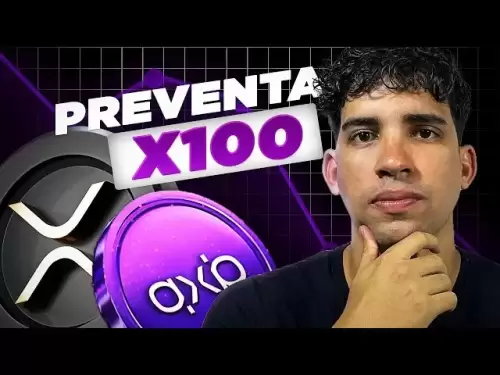-
 Bitcoin
Bitcoin $118100
0.44% -
 Ethereum
Ethereum $3765
5.84% -
 XRP
XRP $3.498
3.12% -
 Tether USDt
Tether USDt $1.000
0.00% -
 BNB
BNB $753.2
3.41% -
 Solana
Solana $181.7
3.58% -
 USDC
USDC $0.9999
0.01% -
 Dogecoin
Dogecoin $0.2704
12.75% -
 Cardano
Cardano $0.8684
5.85% -
 TRON
TRON $0.3151
-0.86% -
 Hyperliquid
Hyperliquid $46.06
4.51% -
 Stellar
Stellar $0.4695
2.48% -
 Sui
Sui $3.910
3.18% -
 Chainlink
Chainlink $19.36
6.65% -
 Hedera
Hedera $0.2750
3.99% -
 Bitcoin Cash
Bitcoin Cash $544.6
6.31% -
 Avalanche
Avalanche $25.12
3.69% -
 Shiba Inu
Shiba Inu $0.00001559
5.40% -
 Litecoin
Litecoin $116.8
5.10% -
 UNUS SED LEO
UNUS SED LEO $8.991
0.05% -
 Toncoin
Toncoin $3.283
2.79% -
 Polkadot
Polkadot $4.509
3.97% -
 Uniswap
Uniswap $10.67
6.58% -
 Ethena USDe
Ethena USDe $1.001
-0.01% -
 Monero
Monero $323.2
0.48% -
 Pepe
Pepe $0.00001410
6.37% -
 Bitget Token
Bitget Token $4.964
1.93% -
 Dai
Dai $0.9998
-0.01% -
 Aave
Aave $326.2
3.85% -
 Bittensor
Bittensor $421.8
2.46%
What is the "in-kind" vs "cash-create" model for ETH ETFs?
Ethereum ETFs use in-kind or cash-create models to offer ETH price exposure, differing in asset backing, regulatory scrutiny, liquidity, and investor risk profiles.
Jul 17, 2025 at 04:35 pm
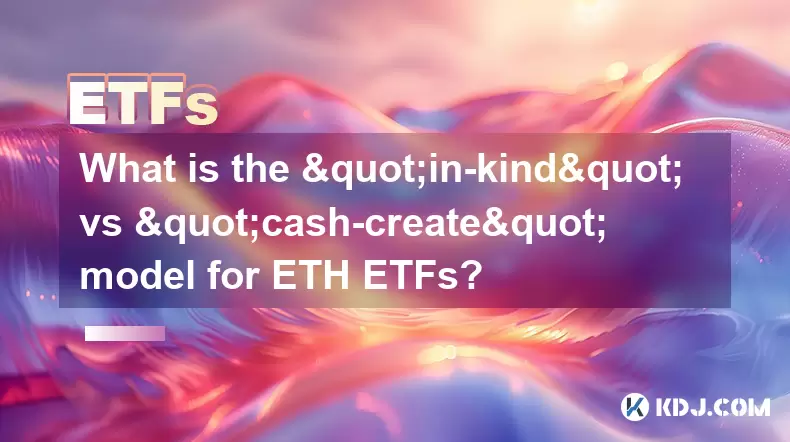
Understanding the ETH ETF Structure
Exchange-traded funds (ETFs) for Ethereum (ETH) are structured to provide investors with exposure to ETH price movements without directly owning the cryptocurrency. Two primary models dominate the design of these ETFs: in-kind and cash-create. Each approach has distinct operational mechanisms, regulatory implications, and investor impacts.
In-kind creation and redemption involves authorized participants (APs) exchanging actual ETH for ETF shares. This method ensures that the fund's holdings mirror the underlying asset supply and demand dynamics.
Cash-create, on the other hand, allows APs to use fiat currency or other financial instruments to create or redeem ETF shares. The fund manager then uses this cash to purchase ETH or synthetic equivalents like futures contracts or swaps.
How In-Kind Creation Works for ETH ETFs
The in-kind model relies on a direct exchange between the AP and the ETF issuer. Here’s how it typically unfolds:
- The AP deposits a specific amount of ETH into the ETF in exchange for a basket of ETF shares.
- This basket is usually large, often representing tens of thousands of ETH, depending on the fund's requirements.
- When redeeming, the AP returns ETF shares and receives an equivalent value in ETH.
- The process is facilitated by custodians who securely store the ETH and ensure its accurate accounting.
This mechanism helps maintain the ETF’s net asset value (NAV) closely aligned with the spot price of ETH. It also reduces counterparty risk because the fund holds real ETH rather than derivatives.
Operational Details of Cash-Creation Models
The cash-create model is more flexible but introduces additional layers of complexity:
- Authorized participants deposit cash instead of ETH to generate new ETF shares.
- Fund managers use the cash to buy ETH on exchanges or enter into derivative contracts that replicate ETH exposure.
- Derivatives such as futures, options, or swap agreements can be used to track ETH prices without holding the physical asset.
- Redemption works similarly—APs return ETF shares and receive cash proportional to the fund’s holdings.
This model may appeal to traditional financial institutions already familiar with cash-based transactions and derivative instruments. However, it increases tracking error and exposes investors to potential credit risks from counterparties.
Regulatory Implications of Both Models
Regulators scrutinize both structures differently due to their inherent risks and transparency levels.
For the in-kind model:
- It aligns well with traditional commodity ETF structures, which are widely accepted by regulators like the U.S. Securities and Exchange Commission (SEC).
- Direct ownership of ETH provides greater transparency, making it easier for auditors and compliance teams to verify holdings.
- However, custody solutions must meet stringent security standards to prevent theft or mismanagement.
For the cash-create model:
- It often involves synthetic exposure through derivatives, which may raise concerns about speculative behavior and market manipulation.
- Regulators may require additional disclosures regarding counterparty risk, liquidity, and the fund’s hedging strategies.
- In some jurisdictions, this model might face higher barriers to approval due to the lack of direct asset backing.
Liquidity and Market Efficiency Considerations
Both models impact the liquidity and efficiency of ETH ETF trading in different ways.
With the in-kind model:
- Liquidity is maintained through the continuous creation and redemption of ETF shares based on ETH inflows and outflows.
- Since the fund holds actual ETH, arbitrage opportunities are minimized, helping keep the ETF price close to the spot ETH value.
- However, during periods of high volatility or low ETH availability, APs might hesitate to engage in creation/redemption activities, potentially affecting liquidity.
With the cash-create model:
- Market makers can more easily adjust positions using cash flows, which can enhance short-term liquidity.
- However, reliance on derivatives may introduce timing lags and basis risk, especially when futures contracts expire or swap rates fluctuate.
- If the fund lacks sufficient cash reserves or fails to roll over derivatives effectively, it may underperform the actual ETH price movement.
Investor Experience and Risk Profiles
From an investor standpoint, understanding the differences in risk and performance is crucial.
In the in-kind model:
- Investors benefit from a transparent structure where each ETF share corresponds to a known quantity of ETH.
- There’s minimal exposure to counterparty default since no third-party contracts are involved.
- Tracking errors are generally lower, offering more predictable returns relative to ETH price changes.
In the cash-create model:
- Investors gain access to ETH exposure even if they cannot transact directly on crypto exchanges.
- However, they face indirect risks from the fund’s derivative positions and potential slippage in replication accuracy.
- Management fees may also be higher due to the complexity of maintaining synthetic exposure.
Frequently Asked Questions
Q: Can retail investors participate in the creation or redemption process of ETH ETFs?
A: No, only authorized participants—typically large institutional entities—are allowed to create or redeem ETF shares directly with the fund provider.
Q: How do I know whether an ETH ETF uses an in-kind or cash-create model?
A: This information is disclosed in the fund’s prospectus and related regulatory filings. Investors should review these documents before purchasing shares.
Q: Which model is better for tax efficiency?
A: The in-kind model may offer better tax advantages in certain jurisdictions, as it avoids triggering taxable events during the creation/redemption process.
Q: Are there any hybrid ETH ETF structures combining both models?
A: Some funds explore hybrid approaches, though most opt for one primary model to simplify operations and regulatory compliance.
Disclaimer:info@kdj.com
The information provided is not trading advice. kdj.com does not assume any responsibility for any investments made based on the information provided in this article. Cryptocurrencies are highly volatile and it is highly recommended that you invest with caution after thorough research!
If you believe that the content used on this website infringes your copyright, please contact us immediately (info@kdj.com) and we will delete it promptly.
- NFT Performers in Flux: Pudgy Penguins, Courtyard, and the Shifting Sands of the Market
- 2025-07-21 10:30:12
- Decoding HKMA's Stablecoin Licensing System: A New Era for Digital Assets?
- 2025-07-21 10:50:11
- Address, CryptoPunks, NFTs: What's the Buzz?
- 2025-07-21 10:50:11
- Ethereum, Crypto, and Market Moves: What's the Deal?
- 2025-07-21 11:30:11
- CoinDCX Hack: A Wake-Up Call for Crypto Security
- 2025-07-21 11:35:12
- Dogecoin & Meme Coins in 2025: Hype or Hyper-Growth?
- 2025-07-21 08:30:12
Related knowledge
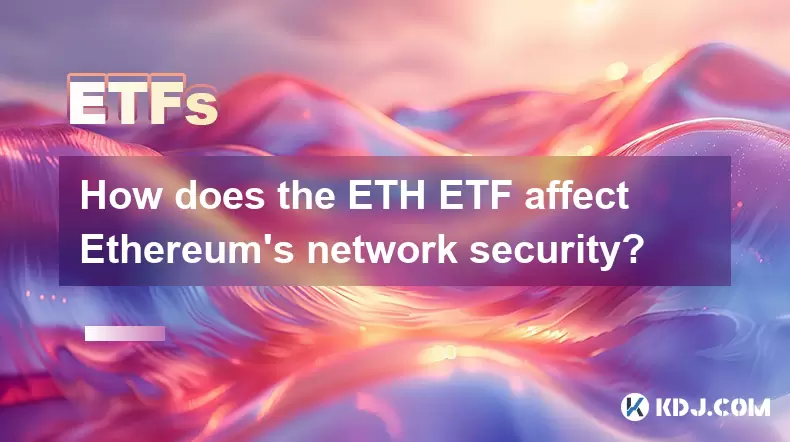
How does the ETH ETF affect Ethereum's network security?
Jul 17,2025 at 01:29pm
Understanding the ETH ETF ConceptAn Ethereum Exchange-Traded Fund (ETH ETF) is a financial product that allows investors to gain exposure to Ethereum ...
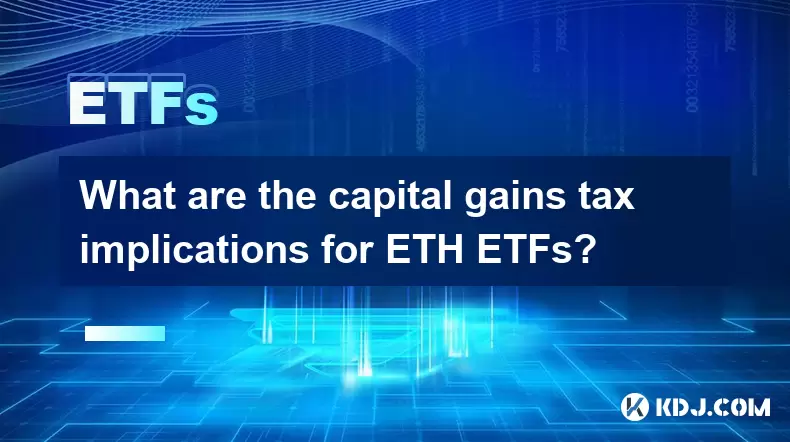
What are the capital gains tax implications for ETH ETFs?
Jul 18,2025 at 08:00am
Understanding Capital Gains Tax in Cryptocurrency InvestmentsCapital gains tax is a tax imposed on the profit realized from the sale of an asset that ...
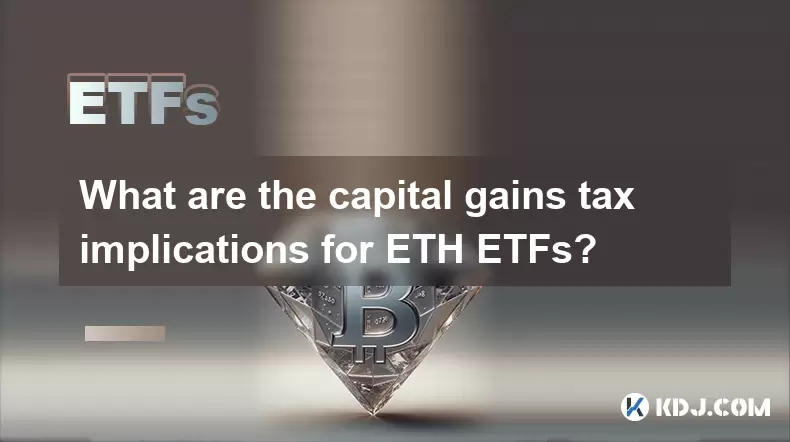
What are the capital gains tax implications for ETH ETFs?
Jul 21,2025 at 11:14am
Understanding ETH ETFs and Their TaxationAn Ethereum Exchange-Traded Fund (ETH ETF) allows investors to gain exposure to Ethereum without directly own...
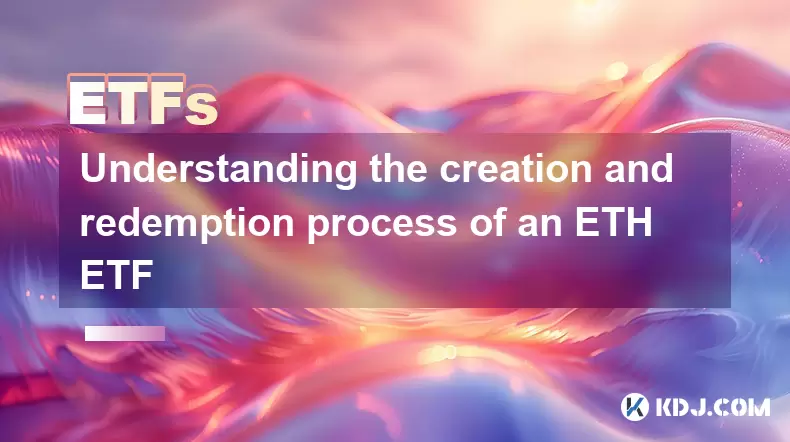
Understanding the creation and redemption process of an ETH ETF
Jul 19,2025 at 07:36am
What is an ETH ETF?An ETH ETF (Ethereum Exchange-Traded Fund) is a financial product designed to track the price of Ethereum without requiring investo...

How to analyze which ETH ETF is the best choice
Jul 19,2025 at 05:01pm
Understanding ETH ETFs and Their RelevanceEthereum Exchange-Traded Funds (ETFs) have emerged as a popular investment vehicle for those seeking exposur...

What are the liquidity risks for an ETH ETF?
Jul 21,2025 at 03:35am
Understanding Liquidity in the Context of ETH ETFsLiquidity refers to how easily an asset can be converted into cash without significantly affecting i...

How does the ETH ETF affect Ethereum's network security?
Jul 17,2025 at 01:29pm
Understanding the ETH ETF ConceptAn Ethereum Exchange-Traded Fund (ETH ETF) is a financial product that allows investors to gain exposure to Ethereum ...

What are the capital gains tax implications for ETH ETFs?
Jul 18,2025 at 08:00am
Understanding Capital Gains Tax in Cryptocurrency InvestmentsCapital gains tax is a tax imposed on the profit realized from the sale of an asset that ...

What are the capital gains tax implications for ETH ETFs?
Jul 21,2025 at 11:14am
Understanding ETH ETFs and Their TaxationAn Ethereum Exchange-Traded Fund (ETH ETF) allows investors to gain exposure to Ethereum without directly own...

Understanding the creation and redemption process of an ETH ETF
Jul 19,2025 at 07:36am
What is an ETH ETF?An ETH ETF (Ethereum Exchange-Traded Fund) is a financial product designed to track the price of Ethereum without requiring investo...

How to analyze which ETH ETF is the best choice
Jul 19,2025 at 05:01pm
Understanding ETH ETFs and Their RelevanceEthereum Exchange-Traded Funds (ETFs) have emerged as a popular investment vehicle for those seeking exposur...

What are the liquidity risks for an ETH ETF?
Jul 21,2025 at 03:35am
Understanding Liquidity in the Context of ETH ETFsLiquidity refers to how easily an asset can be converted into cash without significantly affecting i...
See all articles


























